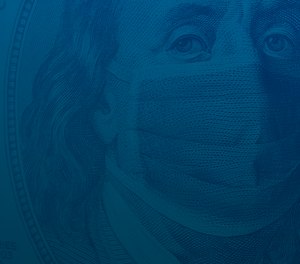
Understand how first responders can participate in the funding
When the American Rescue Plan was passed, we knew it would make an unprecedented amount of funding available to local government . But the details were quite fuzzy. Although there’s still much to be determined, additional guidance has just been released from the U.S. Department of Treasury . In a nutshell, the emphasis is on broad definition for each jurisdiction to meet local needs.
As a reminder, the American Rescue Plan includes direct aid to both state and local governments directly through the Coronavirus State and Local Fiscal Recovery Funds formula grant program. This formula grant program provides $195.3 billion to states and the District of Columbia, $20 billion to tribal government and $130.2 billion to local governments.
Starting May 10, eligible state, territorial, metropolitan city, county and tribal governments may request Coronavirus State and Local Fiscal Recovery Funds through the Treasury Submission Portal. Below is a summary of the guidance released and how first responders can participate in this funding .
The Coronavirus State and Local Fiscal Recovery Funds provide substantial flexibility for each jurisdiction to meet local needs, including support for households, small businesses, impacted industries, essential workers and the communities hardest hit by the crisis.
Treasury expects to distribute these funds directly to each state, territorial, metropolitan city, county and tribal government. Local governments classified as non-entitlement units will receive this funding through their applicable state government. Treasury expects to provide further guidance on distributions to non-entitlement units—defined as less than 50,000 population—next week.
Other payment highlights:
Within the categories of eligible uses, recipients have broad flexibility to decide how best to use this funding to meet the needs of their communities. Approved uses of American Rescue Plan funding include to:
Let’s look at some of these categories in more detail.
Recipients may use American Rescue Plan funding to address a broad range of public health needs across COVID-19 mitigation, medical expenses, behavioral healthcare, and public health resources. Among other services, these funds can help support:
To help alleviate the economic hardships caused by the pandemic, Coronavirus State and Local Fiscal Recovery Funds enable eligible state, local, territorial and tribal governments to provide a wide range of assistance to individuals and households, small businesses and impacted industries , in addition to enabling governments to rebuild public sector capacity.
Funding can be used to rehire public sector staff and replenish unemployment insurance (UI) trust funds, in each case up to pre-pandemic levels. Recipients may also use this funding to build their internal capacity to successfully implement economic relief programs, with investments in data analysis, targeted outreach, technology infrastructure and impact evaluations.
Coronavirus State and Local Fiscal Recovery Funds allow for a broad range of uses to address the disproportionate public health and economic impacts of the crisis on the hardest-hit communities, populations and households. Eligible services include addressing health disparities and the social determinants of health through funding for:
State, local, territorial, and tribal governments facing budget shortfalls may use Coronavirus State and Local Fiscal Recovery Funds to replace lost public sector revenue to avoid cuts to government services. Funds can also be used to provide premium pay for essential workers, including public health and safety staff.
Ineligible uses remain consistent with original guidance: States and territories cannot use this funding to offset a reduction in revenue and funding cannot be used to make a deposit in a pension fund.
Approved uses for Coronavirus State and Local Fiscal Recovery Funds provide many opportunities for public safety agencies to tap into much-needed funding. This opportunity won’t come along again for a long time, so it’s important to prioritize, gather needed information to justify your requests and prepare now to have the best shot at funding. For more information, read our guide on four tips to advocate for your share .
Copyright © 2025 FireGrantsHelp.com. All rights reserved.
